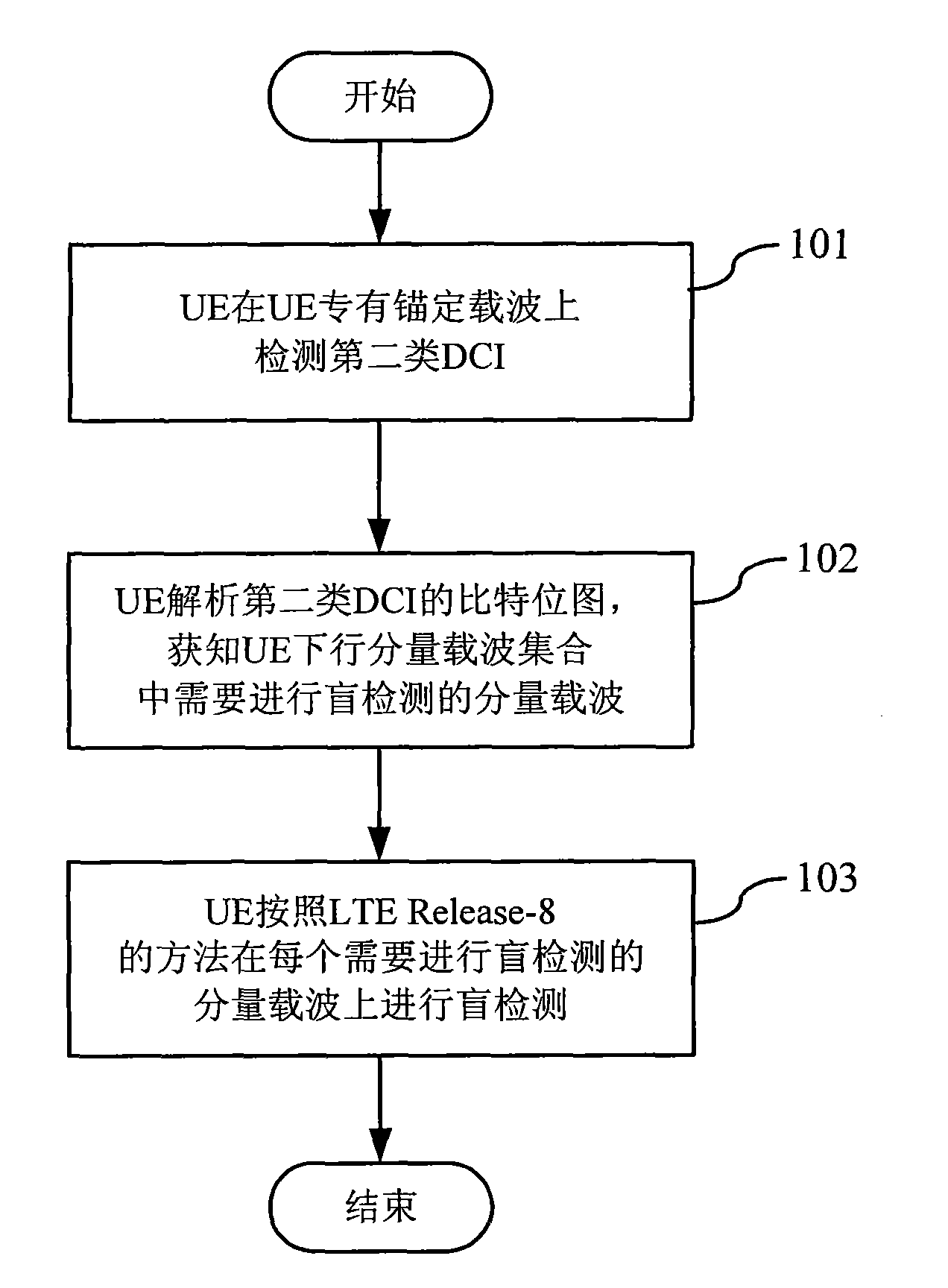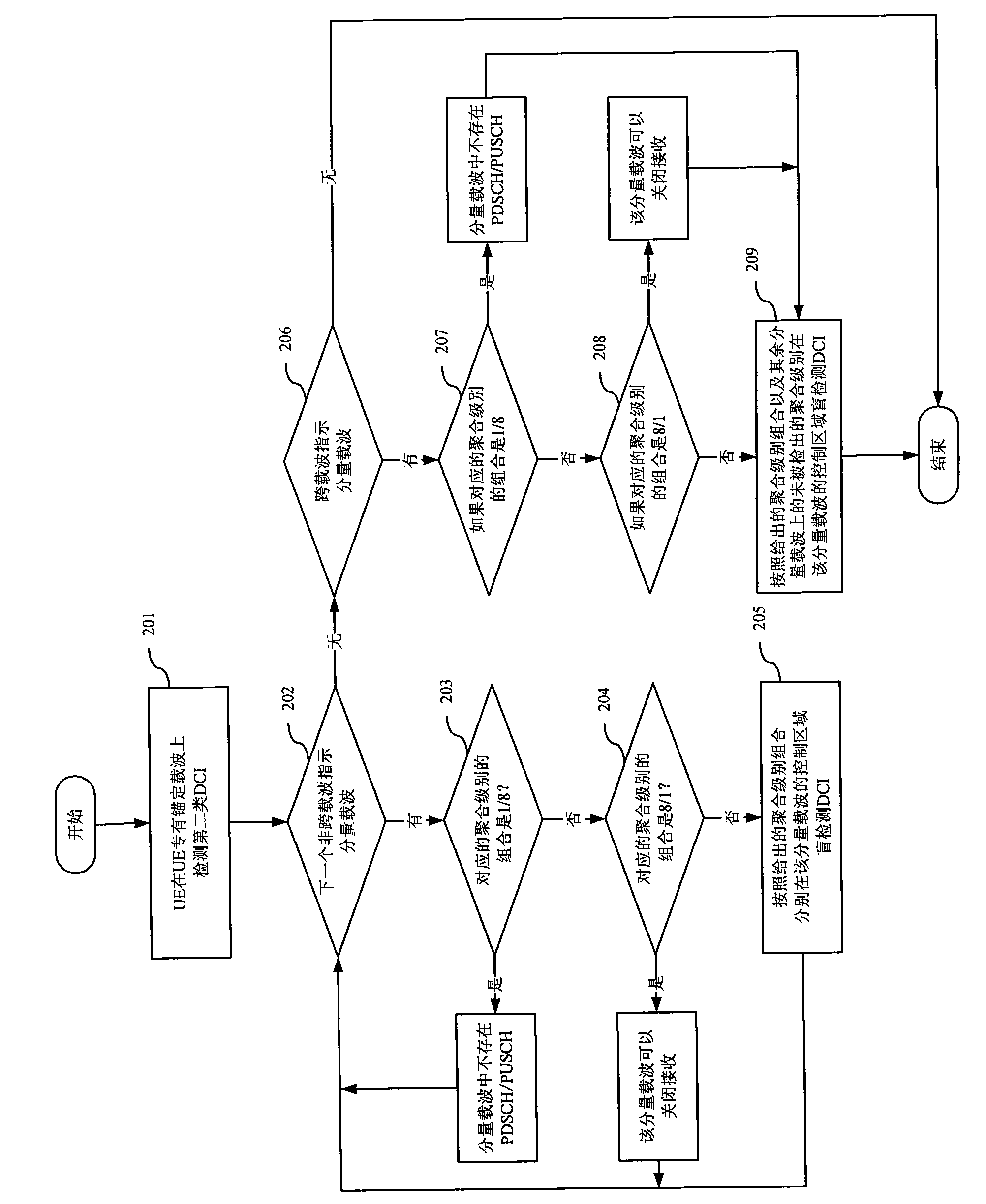Method for sending and detecting downlink control information, base station and user equipment
A technology for controlling information and user equipment, applied in wireless communication, communication between multiple stations, advanced technology, etc., can solve problems such as adding anchor carrier blind detection
- Summary
- Abstract
- Description
- Claims
- Application Information
AI Technical Summary
Problems solved by technology
Method used
Image
Examples
Embodiment 1
[0082] In this embodiment, the indication information related to the user equipment physical downlink control channel monitoring set and / or component carrier activation / deactivation included in the second type of DCI is used to indicate the first type of information on each component carrier in the UE downlink component carrier set. Presence or absence of UE-specific DCI, or activation or deactivation of each component carrier.
[0083] The second type of DCI in this embodiment can be designed as a bitmap (bitmap) indication format whose size (number of bits) is the same as the number of component carriers in the UE downlink component carrier set, that is, each UE downlink component carrier occupies One bit, the 1 / 0 of the bit indicates whether the UE needs to perform blind detection on the component carrier corresponding to the bit, or whether the component carrier corresponding to the bit needs to be activated. The corresponding relationship between each component carrier an...
Embodiment 2
[0089] In this embodiment, the indication information related to the user equipment physical downlink control channel monitoring set and / or component carrier activation / deactivation contained in the second type of DCI is used to indicate the PDSCH / PDSCH in each component carrier in the UE downlink component carrier set. The aggregation level of the first type of UE-specific DCI corresponding to the PUSCH. The second type of DCI is sent on the UE-specific anchor carrier. Note that the first type of UE-specific DCI corresponding to the PDSCH / PUSCH in a certain component carrier is not necessarily in the component carrier, but may be implemented in other component carriers through cross-carrier scheduling.
[0090] Different from the scheme proposed in R1-083609, the second type of DCI in this embodiment can be designed as a format with the same size as the DCI format 0 / 1A format in LTE, so as to avoid the increase in the size of the new DCI format However, the number of times o...
Embodiment 3
[0113] In this embodiment, the indication information related to the user equipment physical downlink control channel monitoring set and / or component carrier activation / deactivation includes: indicating the first type of UE-specific DCI in each component carrier except the UE-specific anchor carrier The presence or absence of the UE-specific DCI aggregation level of the first type of UE-specific DCI corresponding to the PDSCH / PUSCH in each component carrier except the UE-specific anchor carrier. The combination of special aggregation levels is used to indicate the component carrier corresponding to the combination If there is no PDSCH / PUSCH corresponding to the current UE or the component carrier corresponding to the combination can turn off reception. The second type of DCI is sent on the UE-specific anchor carrier. Note that the UE-specific DCI of the first type corresponding to the PDSCH / PUSCH in a certain component carrier is not necessarily in the component carrier, but m...
PUM
 Login to View More
Login to View More Abstract
Description
Claims
Application Information
 Login to View More
Login to View More - R&D
- Intellectual Property
- Life Sciences
- Materials
- Tech Scout
- Unparalleled Data Quality
- Higher Quality Content
- 60% Fewer Hallucinations
Browse by: Latest US Patents, China's latest patents, Technical Efficacy Thesaurus, Application Domain, Technology Topic, Popular Technical Reports.
© 2025 PatSnap. All rights reserved.Legal|Privacy policy|Modern Slavery Act Transparency Statement|Sitemap|About US| Contact US: help@patsnap.com



